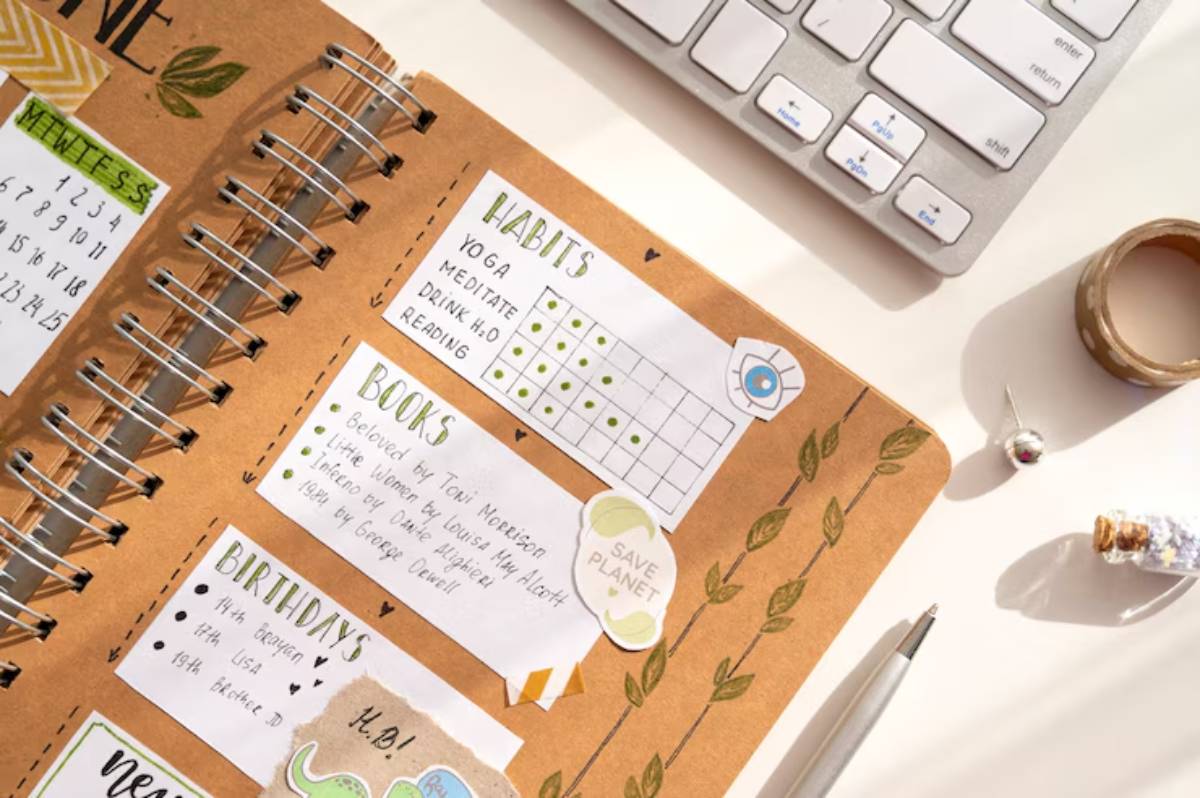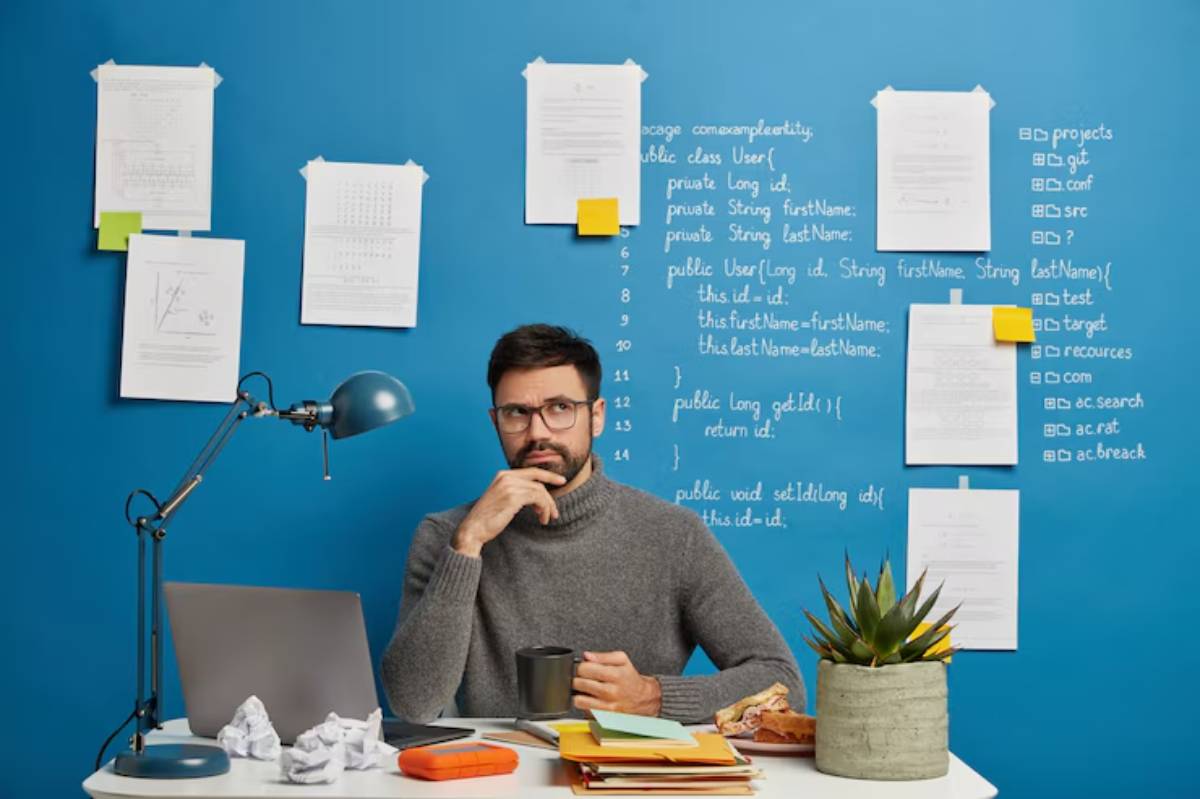
Creating a Weekly Planner for Student Employees
When Time Slips Through Your Fingers, a Planner Helps You Hold On
Ever had a week where your assignment’s due, your manager calls you in for an extra shift, and you still need to figure out what to eat for dinner? Juggling work and school is a full-time job in itself. And without a plan, chaos tends to take over.
But here’s the truth — it’s not about squeezing more into your day. It’s about structuring your time around what matters most. A weekly planner for student workers can be the difference between just surviving and actually thriving.
In this post, you’ll learn how to build a practical, flexible, and personalised schedule template that helps you stay on top of work, studies, and your own wellbeing. We’ll also share insights into creating a working student plan that fits your lifestyle, energy levels, and long-term goals, not just your deadlines.
Why Student Employees Need a Weekly Planner
The Pressure Is Real

Being a student and an employee means juggling academic pressures with real-world responsibilities. It’s a constant balancing act. According to the UK’s Higher Education Policy Institute (HEPI), over half of full-time students work part-time to support themselves, and those numbers are rising.
A planner helps you:
- Avoid double-booking and last-minute stress
- Prioritise both your studies and job commitments
- Reduce decision fatigue and mental overload
- Set aside time for self-care and rest
1: Audit Your Week (Yes, Everything)
Before you start creating your schedule, get a clear view of your current commitments.
Track a week of your life, and include:
- Class hours and commute
- Shift times
- Study time and homework
- Meals, sleep, and breaks
- Social time and downtime
- Commute or errands
Use a time-tracking app like Clockify, or jot things down in 30-minute chunks. You’ll quickly see patterns — where your time goes, where you’re overscheduled, and where you can find breathing space.
2: Choose a Planner Format That Fits

No one-size-fits-all solution here. Choose based on how you naturally operate.
Option 1: Digital Planner
- Google Calendar: Great for time blocking, alerts, and syncing across devices
- Notion: Ideal for task tracking, embedded templates, and linking study goals
- Trello: Good for visual learners and prioritising tasks in columns
Option 2: Printable Templates
- Use a weekly schedule template from sites like Template.net or Canva
- Stick it on your wall or keep it in your folder
- Use colour-coding for classes, work, and personal time
Option 3: Paper Planners or Bullet Journals

- Best for tactile learners
- Writing things down improves memory
- Easy to sketch, quick to-do lists or meal plans
Consistency is key to whichever format you choose.
3: Plug in the Non-Negotiables
Start with what’s fixed — things you must attend to or complete.
Fixed Inputs:
- Lectures, seminars, tutorials
- Work shifts
- Major assignment deadlines
- Scheduled meetings or labs
- Medical appointments
Add these into your planner before anything else. They’re your framework for the week.
4: Block Time for Focus Work
Once you’ve added the essentials, create study blocks around them.
Try:
- Pomodoro sessions (25 minutes work, 5-minute break)
- 90-minute deep work windows for essays or exam prep
- Review slots to go over lectures within 24 hours
Match study time to when your brain works best:
- Morning person? Do writing before your first class.
- Night owl? Reserve evenings for reading or note review.
Be realistic — don’t plan 4 hours of deep study after an 8-hour shift.
5: Include the Invisible Tasks
Here’s where most students go wrong — they forget to plan for:
- Getting ready and commuting
- Grocery shopping or cooking
- Group project chats or catch-up calls
- Wind-down time before bed
Planning these “in-between” moments gives you a more accurate schedule and reduces the chance of falling behind.
6: Make Room for Rest and Recharge
Why Breaks Matter
Burnout doesn’t happen all at once — it creeps in when you skip rest repeatedly. So, schedule your breaks on purpose.
Rest can include:
- Power naps (20 minutes max)
- Walks, stretching, yoga
- Hobbies (music, art, sports)
- Screen-free time before bed
Even one full day off per week can make a massive difference in your energy and focus.
7: Review and Adjust Weekly
Sunday night or Monday morning, take 15 minutes to:
- Look at the week ahead
- Check for conflicts or double bookings
- Add new tasks or shifts
- Reflect on last week: what worked, what didn’t?
This weekly reset makes your planner a living tool, not a static calendar you abandon by Wednesday.
Sample Weekly Schedule Template
| Time | Monday | Tuesday | Wednesday | Thursday | Friday | Saturday | Sunday |
| 7–8 am | Wake + breakfast | Wake + prep | Gym + notes | Wake + review | Wake + emails | Sleep in + prep | Sleep in + plan |
| 8–10 am | Class | Study Block | Work Shift | Class | Class | Shift (9–1) | Study session |
| 1012 pmm | Study session | Class | Shift cont. | Study Block | Lecture | Shift cont. | Break/brunch |
| 12–1 pm | Lunch | Lunch | Lunch | Lunch | Lunch | Gym | Clean / errands |
| 1–3 pm | Library | Study Group | Notes review | Assignment | Work Shift | Shift (1–5) | Rest + creative |
| 3–5 pm | Work shift | Rest time | Class | Group Call | Shift cont. | Grocery shop | Meal prep |
| 5–6 pm | Break + dinner | Dinner | Gym | Dinner | Dinner | Movie night | Dinner |
| 6–8 pm | Reading | Work Shift | Work Shift | Study session | Social / unwind | Social plan | Planner reset |
| 8–10 pm | Notes review | Shift cont. | Shift cont. | Screen-free | Sleep early | Rest time | Sleep early |
Tips to Stick to Your Working Student Plan
1. Plan Weekly, Not Daily
Don’t over-plan every hour. Set anchors and intentions weekly, then flow around them.
2. Use Alarms or Reminders
Set Google Calendar alerts or sticky notes to stay on track, especially when switching between classes and work.
3. Be Kind to Yourself
You won’t stick to it 100% — and that’s okay. Life happens. What matters is having a system to which to return.
4. Track Wins and Adjust
Each week, ask:
- What drained me?
- What energised me?
- Where did I waste time or overcommit?
Adjust accordingly.
Real Student Story: How Aanya Balanced Her Schedule
Aanya, a second-year pharmacy student, was working 12 hours a week at a local chemist. At first, she didn’t use a planner and was constantly scrambling.
Once she started using a printable weekly planner:
- She blocked 2-hour revision slots after class
- Moved her Saturday shift earlier to keep evenings free
- Added meal prep and gym slots
“The biggest change was mental. I stopped feeling guilty for resting. Now I feel in control.”
Like Aanya, once you see your life clearly mapped out, you’ll stop feeling like you’re always behind.
Conclusion: Your Planner Is a Power Tool
Your time is precious — and limited. A thoughtful weekly planner for student workers isn’t about control. It’s about clarity. When you see your week mapped out, decisions become easier. Priorities become visible. And burnout becomes avoidable.
Whether you’re working a few hours or balancing two jobs and a full class load, a working student plan gives you the structure you need to succeed, without sacrificing your well-being.
Ready to design your ideal student planner? Download a free editable schedule template or share your best time-blocking tip in the comments.
Because when you plan smarter, you live better. Let your planner be the support system that keeps you grounded.


